-
Posts
1260 -
Joined
-
Last visited
-
Days Won
1
Content Type
Profiles
Forums
Events
Posts posted by Hiromachi
-
-
On 7/20/2024 at 9:13 AM, skywalker22 said:
RSBN is not working at all. ARC didn't try it. I went through the file, and all seems to be fine, but it's not working, at least not for me.
I also tried reducing to only few airports, in case if there might have been any code glitch, but still the same, RSBN is not working at all. Really strange.
And btw, you should also create a kneeboard, so we can read from it, now I have to look into lua file

--
Are your files going to be used in DCS?
Did you remember to add the map to the maps table in the R_NAV_data.lua?
Kneeboard will be created once RSBN is deemed satisfactory for releasing in a module update.
-
 2
2
-
-
Yes. Eventually all of them. Recently I have prepared the nav file for the Sinai. Please try it out and let me know what you think, while I prepare nav data for the remaining maps.
-
 2
2
-
 3
3
-
-
Yes indeed, timing was perfect

-
 2
2
-
-
16 hours ago, Bremspropeller said:
According to Y.Gordon, the PFM during ongoing production got the improved RP-21M radar. It's not clear, however, what the impovement was.
So quick overview of the manuals indicated to me only one major difference, in that RP-21M is also capable of detecting, intercepting and automatically tracking a target under pulsed non-synchronous interference conditions ( 1. Asynchrone Impulsstörungen - http://www.mig-21-online.de/mig-21/funkmessvisier/abfangen-fm-stoerungen/) and under conditions where passive interference dipoles ( 2. Chaff) are released toward the interceptor aircraft:
1.

2.

There are probably more differences, but it seems RP-21 to RP-21M upgrade focused on filtering ECM.
-
 3
3
-
 2
2
-
-
51 minutes ago, Bremspropeller said:
That's an interesting GP-9 retrofit on the PF!
According to Y.Gordon, the PFM during ongoing production got the improved RP-21M radar. It's not clear, however, what the impovement was.
Both PF and PFM had the RP-21M, but in regards to the former one, it was introduced later in the production or during major overhaul.
I have somewhere a list of modifications. Or I can just go through manuals and see if I can observe differences in description.
48 minutes ago, some1 said:Something looks off in your numbers, the Bis lost 2358 kg between takeoff and landing at 7% fuel, while F-13 lost 2153. Minus 150 kg missiles, that is 2200 vs 2000 in consumables, fuel mostly. Only 200 kg difference.
Yet the difference in fuel capacity between the planes is around 400-700 kg depending on the particular F-13 s/n, not 200 kg.
Yefim Gordon gives empty weight for F-13 at 4870 kg, while for Bis he quotes 5340. Takeoff 7100 vs 8750 respectively. As I said, it looks like the difference in fuel and payload makes the most of it, not the airframes themselves.
Nothing can be off beyond the extrapolation of the weight at landing with 7% fuel since specific number is listed only for 25% remaining fuel (6800 kg).
If you don't like the numbers, you can take it with Mikoyan OKB:
Internal fuel weight in the bis is 2400 kg, in the F-13 its 2080 kg, so 320 kg.
-
 2
2
-
 2
2
-
-
23 hours ago, Bremspropeller said:
The F-13 is widely known for it's best dogfighting capabilities in the whole -21 family by most pilots flying a variety of models, yet not much else. It's already short on fuel when retracting the landing-gear on take-off, it has to rely on GCI and it's combat value is very limited. It's a hell of an aircraft to fly, look at and have fun with, though.
We've been there in October. Opinions about F-13 vary:
22 hours ago, some1 said:Yeah, but we're looking at an empty weight difference of about 500 kg (roughly 10%). It won't be night and day. MTOW is much higher, but that's just stuff - fuel and payload. Do not load full tanks on the Bis, set 1/3rd of gun ammo and two R-3S, and you get a rough approximation of what F-13 could do.
That being said, I'd still love to see F-13 in game, although I would prefer an early PFM with the old style one-piece canopy.
F-13 take-off weight (two R-3S missiles) - 7370 kg, near empty weight (landing with 7% of fuel remaining and no missiles) - 5217 kg,
PF take-off weight (two R-3S missiles) - 7838 kg, near empty weight (landing with 7% of fuel remaining and no missiles) - 5573 kg,
Bis take-off weight (two R-3S missiles) - 8726 kg, near empty weight (landing with 25% of fuel remaining and no missiles) - 6800 kg. There is no 7% fuel equivalent in the book, but considering that total internal fuel weight is around 2400 kg, 7% would be around 6368 kg.
This is based on the available manuals. Thats like ~20% (Take-off) to 22% (Landing), not 10%. But note that 7% fuel for the Bis is sub-optimal for landing configuration, changing landing characteristics.
Either way its twice as much as you think.
-
 1
1
-
-
-
The only jammers MiG-21 could have, would be the SPS-141 / 142 / 143 in SM-1 container (the entire pod should properly be called SM-1, SPS jamming station was merely a part of it along with ASO-2 chaff and flare dispensers). And according to Soviet, Polish and DDR manuals I have for MiG-21PF / PFM / SPS from the 1980s they also could be equipped with SM-1 jamming pods.
-
29 minutes ago, Bremspropeller said:

From which book is this picture?
I have Praktische Aerodynamik für Flugzeuge mit Strahltriebwerken printed in Berlin in 1976 and used in Nationale Volksarmee Offiziershochule "Franz Mehring" in Rothenburg, but it doesnt have such fancy stuff

-
 1
1
-
-
11 minutes ago, Bremspropeller said:
Shouldn't all FLs have their brake-chute housing at the base of the fin, as opposed to at the ventral fin as this one?
If it has thin keel than no.
-
On 11/21/2022 at 8:55 AM, 303_Kermit said:
Mostly used variant of MiG-21 in Syria, Egipt and Iraq was FL
Ugh, thats not really true. It never exceeded the numbers of PFMs, PFS or MF in any of the mentioned countries during 1967 war, War of attrition or 1973 war.
Iraq for example received only 20 MiG-21FLs in 1966. In 1967 they already received 36 brand new PFMs and in 1971 further 20 MFs. Not to mention some 48 MiG-21bis delivered between 1979 and 1983. I think Iraq had even more Hawker Hunters than MiG-21FLs.
That wouldn't be true for Egypt either, especially since immediately after 1967 war, Soviet Union decided to rapidly send 65 of their PFS to restore some of the Egyptian Air Force capabilities, which was virtually annihilated. Finally, Syrian Ordre de bataille as of October 1973, indicates that most common variant were PFMs and MFs.
Note: all the above numbers are rounded for the purposes of quick search and based on slightly dated, but still likely some of the most accurate, publications:
- Arab MiGs. Volume 5: October 1973 War, Part 1,
- Iraqi Fighters: 1953-2003: Camouflage & Markings
9 hours ago, Bremspropeller said:I haven't been able to find an indian FL with the narrow tail so far.
Voila
FLs are easy to distinguish as they had no SRO antennas.
5 hours ago, Bremspropeller said:The FLs, PFs and early PFMs didn't have internal guns. Only the later(?) PFM had a modification that allowed carriage of the GP-9 gunpod (SPS-K* in the East German Air Force). Not sure if the PF, PFS and erlier PFMs ever were retrofitted, but I guess those were just sidelined and newer models replaced them at the front-lines.
Poland kept 21PF in service until 1989. And they were retrofitted with GP-9 as picture below shows:
Polish PFs were modernized since the time of their arrival in 1964 / 1965, by replacement of RP-21 blocks with RP-21M, installation of SBKO-E blocks for identification control and couple other things like installation of the hook under the airframe to attach the mentioned GP-9 pod.
-
 4
4
-
-
I suppose this thickness values differing from the documented ones are an attempt to factor something called hardness of the material. The line only says steel and there does not seem to be a place where you can input different hardness values for face, core and back, which should be the case as most of the WW2 armor used in those aircraft was face-hardened. For example Japanese 16.5 mm armor from the Ki-48 "Lily" bomber had hardness of the "face" of 555 - 589 (Brinell hardness) or 56 - 59 (Rockwell C hardness) and 302-341 for the "Back" (again in Brinell hardness scale). Similarly in Ki-43, Ki-61, etc. where 0.5 caliber AP bullets of penetration above 20+ mm failed to penetrate 13 - 15 mm plates.
So this higher thickness might be a simple attempt, by using the material of the same properties, as DCS does not go into details of metallurgy and material properties, to factor that "the other way".
-
Yes, I know. MiG-21M while having a number of interesting features, is the most pitiful (save for the abomination called SMT) of the 21s due to significant weight increase for no power increase. MF fairs a bit better due to installation of the R-13 engine. Eventually East German and Yugoslavian MiG-21Ms were upgraded to R-13 engine but its still below the thrust to weight ratio of earlier 21s or 21bis.
Now I'm looking for a next book: "Als Pilot in zwei deutschen Luftwaffen".
-
 4
4
-
-
1 hour ago, Bremspropeller said:
You just made me buy two books

I knew the PFM was eventually going to get some love around here

When I found Mediascrpt two years ago i was amazed with the quality of their publications. Wish polish books about aviation units were even remotely close to that. I don't speak German really well, but in the era of smartphones and dynamic translators, one can make do. Can't wait for their books about JG-3 and JG-8.
Some day, sometime, who knows. Though I favor PF over PFM because of the canopy.
-
 3
3
-
-
Good, so I'm not the only one wanting it now

-
 9
9
-
 1
1
-
-
PF / PFM were second best, after MiG-21bis, when it comes to thrust to weight ratio, and only because latter one had second afterburner stage. Take that out of the equation, and PF / PFM end up at the top with T/W in excess of 0.8 And if you really want to be prepared to fight Phantoms (especially F-4E than PF / PFM with R-13 engine will be needed
 ).
).
Michael Wegerich, former NVA and Luftwaffe pilot who flew, among other things, MiG-21M, than MiG-21SPS (NVA name for PFM) and finally MiG-29, preferred the SPS. I recall similar statement from a Czech pilot. So Michael, in recently released book about NVAs JG-1 - "697, Montur-Start, Überfahrt zu Halifax-Start, Kanal 1", said this about MiG-21SPS (mind you its automatic translation from German to English, some errors will be there):
"FLYING ON THE MIG-21 SPS / SPS-K - Michael Wegerich, Lieutenant Colonel NVAWhile I loved the MiG-21 F-13, my true love was the MIG-21SPS. It was very balanced in controllability and stability. It reacted immediately to control deflections and could be flown in a stable attitude without great effort. Compared to the F-13, the controls felt slightly subdued and not as fidgety. This made flying easier, especially when intercepting targets in the clouds or at night. But even in a dogfight, the controls left nothing to be desired. A clearly audible warning shaking signaled that the maximum permissible angle of attack had been reached and that the aircraft was about to tip over or be imminently stalled with an unwanted rotation as a result.
With only two weapon stations, the SPS was very light compared to its successors and it was powered by the powerful R-11F2S-300 engine with 6,175 kg of thrust. The SPS had a thrust to weight ratio greater than 0.8. Relatively tight maneuvers were possible thanks to this good thrust-to-weight ratio. It was permitted to go up to a loads of 8.5 G. Even brief 11.5 G did not bother the aircraft. It wasn't a heroic feat, but I once pulled enough in air combat training to shake off my opponent. I managed to do that, but for the time being I had to do without the next flight on the same machine. As the permissible load of 8.5 G was exceeded, the machine had to be checked to ensure that all devices, lines and cables were still in the correct place and that nothing was warped or bent. That lasted about an hour and my planned aerial opponent was in the air with another one in the meantime. After checking the aircraft, I was able to throw myself into the dogfight again with the aircraft, provided the permitted limits were observed. Such an experience strengthens confidence in the stability, reliability and performance of this technology. If some people dreamed of a Porsche in their garage, I would have loved to have had a SPS in my garage, to do a few flights at the weekend without asking anyone, without a flight order, simply for the fun and joy of flying this MiG. (...). After the work on the aircraft in the KRS, the machines had to be checked under simple weather conditions, i.e. blue skies and sunshine, before they were certified for combat training. If necessary, these flights were also carried out at the weekend with a small crew at the airfield and without much organization. Since I really enjoyed doing these flights with the SPS, I felt that this task was like pursuing a hobby at the weekend. After an engine change, the check flight program called for a check of the engine system to Mach 2 and to an altitude of 18-19 km. The SPS flew slightly faster than the F-13 at 2,175 km/h and achieved the same static ceiling altitude. The flight characteristics at altitude were just as excellent as with the F-13. The directional stability in the supersonic range and when flying with high angles of attack was improved by enlarging the vertical stabilizer and keel. The lurch around 21 the vertical axis was occasionally still noticeable when pulling up, but it was not a problem.
The SPS accelerated best in the supersonic range compared to the other variants. The machine owed this to the powerful engine, the relatively low flying weight, but also to the new continuously and automatically adjustable cone. This regulated the air flow in the air intake section depending on the engine RPM, speed, altitude and angle of attack, so that the engine could be optimally supplied with air under all flight conditions. I noticed the effect of the positive thrust-to-weight ratio of the SPS in comparison to the successor models when I switched from the M/MF to the SPS and carried out my first summit interception. The interception procedure saw the climb to an altitude of 11-12 km with a west-southwest curve. At altitude, the aircraft accelerated to Mach 1.2 with a slight descent. The acceleration was speeded by the descending flight, since the drag coefficient increased with increasing speed at Mach 1 and only dropped sharply when Mach 1.1-1.2 was reached. This area had to be overcome quickly in order not to consume too much fuel. When Mach 1.2 was reached, a 180° turn was carried out on a north-easterly course with an inclination of approx. 35°. At the end of the turn, the speed should be Mach 1.5, then accelerate further to 1.8 and climb to the target altitude of 18 km. You had to fly the 180° turn very carefully, otherwise you wouldn't reach Mach 1.5 on the commanded north-east course. I flew the turn on my first flight on the SPS, as I was used to on the M/MF, very carefully and sensitively, with not too much bank and load multiples. At the end of the curve I had Mach 1.8 instead of Mach 1.5 because the SPS was able to accelerate very well. Corresponding to the high speed at the end of the curve, my curve radius was also much too large and I was much too far north for the normal recovery geometry, almost 30 km. Thanks to the energy reserves of the SPS and its agility under the flight conditions, I was able to correct this error and still successfully engage the target at an altitude of 18 km. This would not be possible with an M/MF , because of the increased weight one always flew with higher angles of attack and thus with higher drag, which resulted in higher fuel consumption. The stepless and automatically moving cone also made aerial combat easier than on the F-13. There were no restrictions on turning on the afterburner. Whenever you needed thrust, you could switch it on regardless of the load factor, angle of attack or position.
An example of a flight maneuver where automatic control of the cone was required in air combat was the following: as a target for another fighter, I let the fighter fly towards me from behind and from a good attack position. Shortly before he was in firing position, I deployed the airbrake and pulled towards him at an 80-degree bank angle with a high loss of speed but a small turning radius, at the shaking limit, so that we met on opposite courses. None of his weapons, cannon or rockets, were usable now. At the same moment I switched on the afterburner, retracted the airbrake and the flaps to 25 degrees. I turned the machine on its back and pulled it down again at the shaking limit, i.e. with maximum angle of attack, behind the target and immediately retracted the landing flap again. With this extremely fast maneuver I flew at the permissible limit just behind the target. I was lower than the target and the pilot couldn't see me. I had to leave the burner in place, then I was within shooting range and was able to shoot it (simulated) without him seeing me."-
 13
13
-
 3
3
-
-
I wanted to get some better pictures but for that Id have to disassemble entire mounting ... and I just dont feel like doing it now. Not because I'm lazy, but I'm dealing with covid for the past few days.
So I will show you my entire construction and than focus on the throttle specifically. My first problem was how to mount this thing in a comfortable and adjustable way. So I came up with an idea (not alone
 ) to use the aluminium profiles. In this case 40 x 40 mm Bosch profiles:
) to use the aluminium profiles. In this case 40 x 40 mm Bosch profiles:

Simultanously, I started rewiring entire thing. Most of the switches were absurdly simple, although I had no experience soldering so it took me a while to get it done and after couple more panels and things Id probably do it much better now. Still. Inside of the throttle assembly there are four switches like this one:

These are simple things, with three connections. When this tiny red "button" is pressed it closes one circuit, when its depressed another circuit is closed. So effectively, out of one switch you get two. It serves me for ignition / shutdown in MiG-21 and few other modules. Similarly there are switches past afterburner detent:

So in modules where afterburner is activated with some kind of a switch this allows me use them. In MiG-21 emergency afterburner is activated that way with this solution

Rest is basically in the grip:


I wont be getting into buttons in the grip itself since they are pretty darn easy to rewire. The real pickle was the grip rotation ending with old potentiometer and another switch. As you can see, when grip is rotated to "0" position, it presses the button. I think irl it was for automatic ranging with radar. The moment you started twisting the grip, circuit would be left open and manual range input would proceed.
I tried to get potentiometer to work (even though I broke one of the pins) but it was really old and there was just too much ghosting so I have settled with a sensor and magnet attached to potentiometer:


Sensor is attached to a 3d printed frame which in turn is attached to the bottom of the potentiometer. Above the sensor there is a magnet attached to the rotating pin. Voila.
The last thing of course is the throttle mechanism itself:



So I could not get the sensor attached in any other way than this. I basically mounted it in the center of axis rotation and had this metal "arm" attached to the throttle. At the bottom of the arm there is a magnet, so whenever I open / close throttle, it rotates over the sensor.
All in all its not the best looking solution and I would have done it differently, but I got other things to attend in recent months so I will get back to it and couple other panels some other time. Hope this will be helpful

-
On 8/18/2022 at 11:10 AM, [MVP] Mugga said:
@jocko417 Did you end up getting your throttle quadrant rigged up and working within DCS? I have started tearing my unit down in preparation for repainting and setup for Arduino/DCS BIOS.
While Im not jocko417, I can send you later pictures of my F-100 throttle and how its connected. I basically have main throttle arm, twist and all buttons working.
-
On 8/8/2022 at 3:23 AM, Schmidtfire said:
Perfectly fine?
 The RWR is an "Experimental Feature" that does not work properly in multiplayer. It sort of works in Singleplayer.
The RWR is an "Experimental Feature" that does not work properly in multiplayer. It sort of works in Singleplayer.
Everything is in the patchnotes ...
-
 2
2
-
-
Dear Pilots
the long awaited news update from our company is now live. It covers a wide range of topics starting with the F4U-1D Corsair, assets, F-8J Crusader pilot and many other things!We hope you will enjoy it

-
 15
15
-
 4
4
-
-
Distance counter works for both ARK and RSBN. Distance counter was first introduced in MiG-21PFM (and retrofitted to some PFs) which is way way before RSBN. Obviously for ARK the principle of operation differs but tldr is that this is correct.
-
Depends for who and depends where. Warsaw Pact and export customers would almost exclusively have R-3S Atoll, rather than newer R-13M missiles. Soviet Union would have higher % of R-13Ms but still primary missile would be R-3S.
-
 4
4
-
 1
1
-
-
No, we have noticed it. Does it still persist after todays update?
-
Will add this to my testing list.
-
 1
1
-


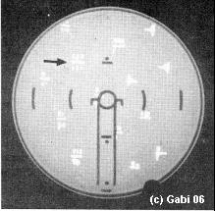
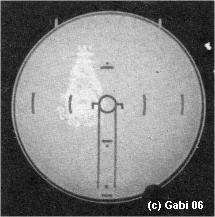
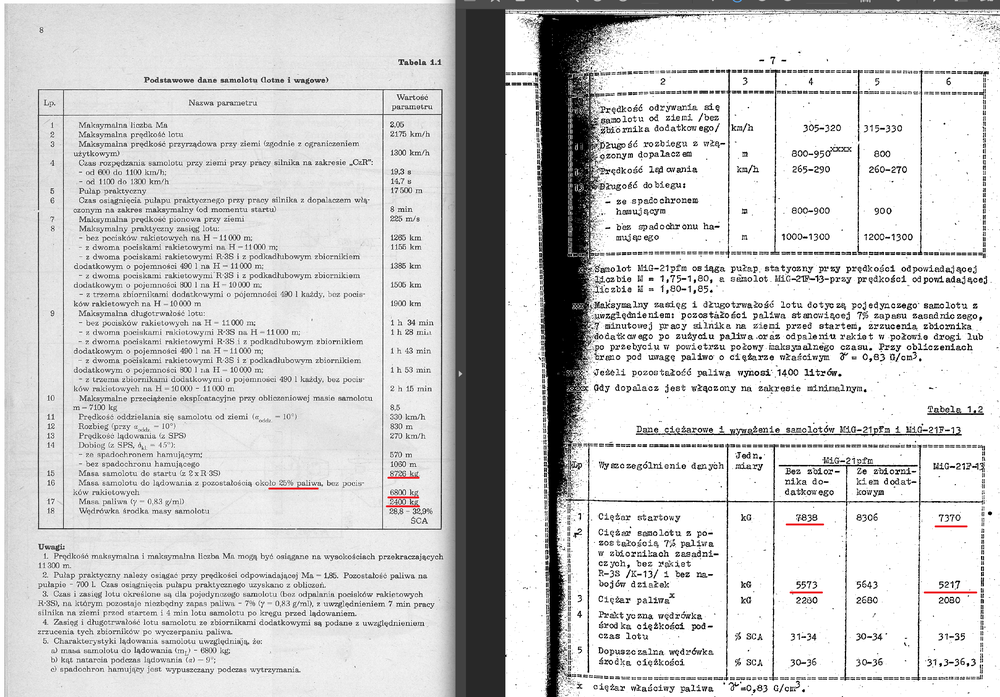
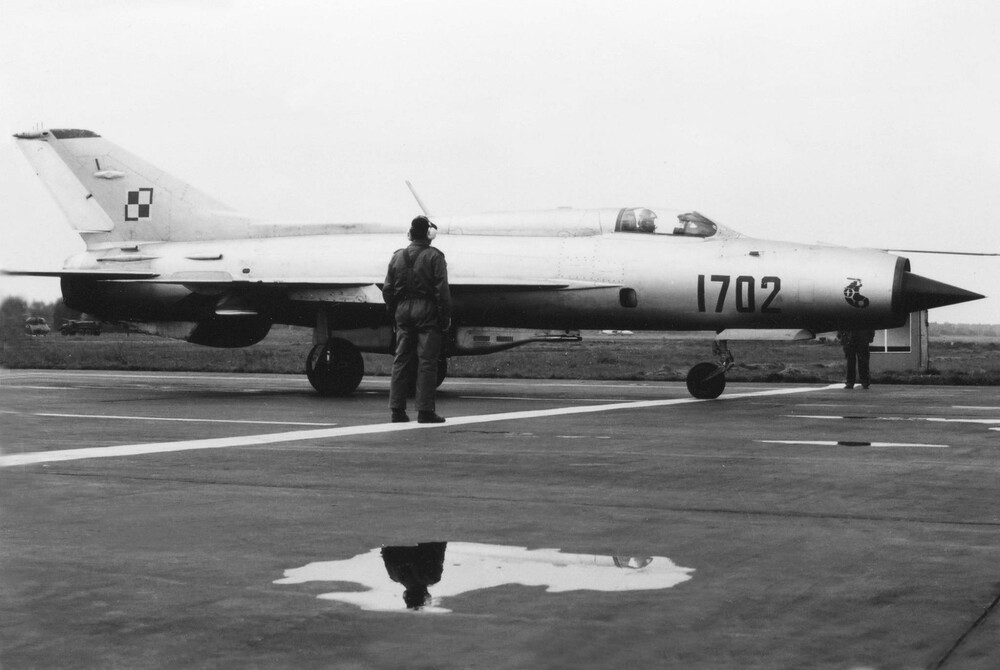
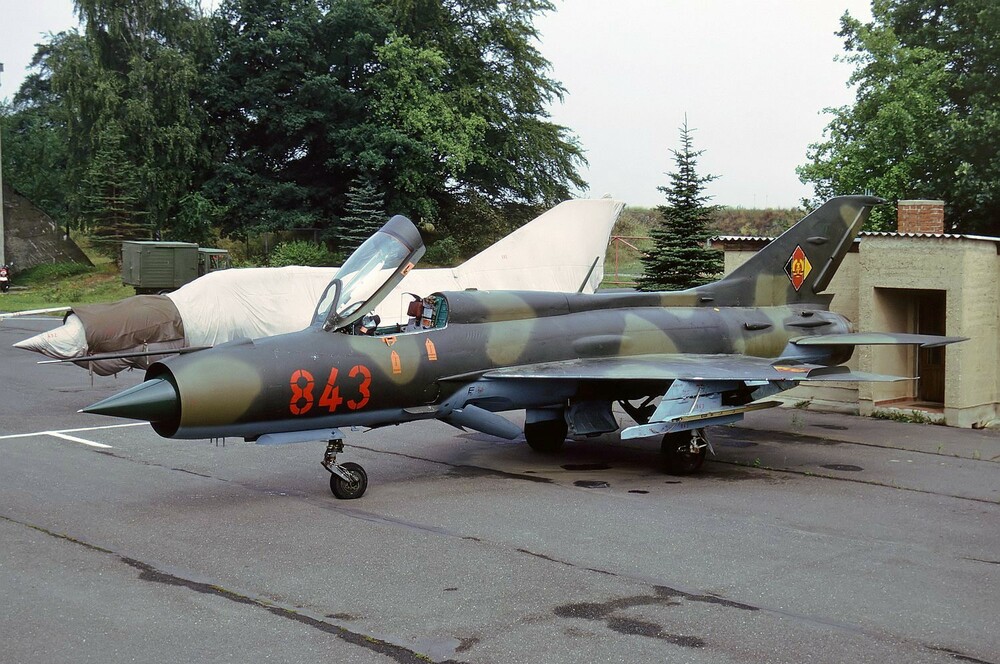












RSBN & ARK Still Missing
in MiG-21Bis
Posted
Alright. It worked in my tests, but I will discuss this with the team and see where is the problem. Thank you for the feedback!